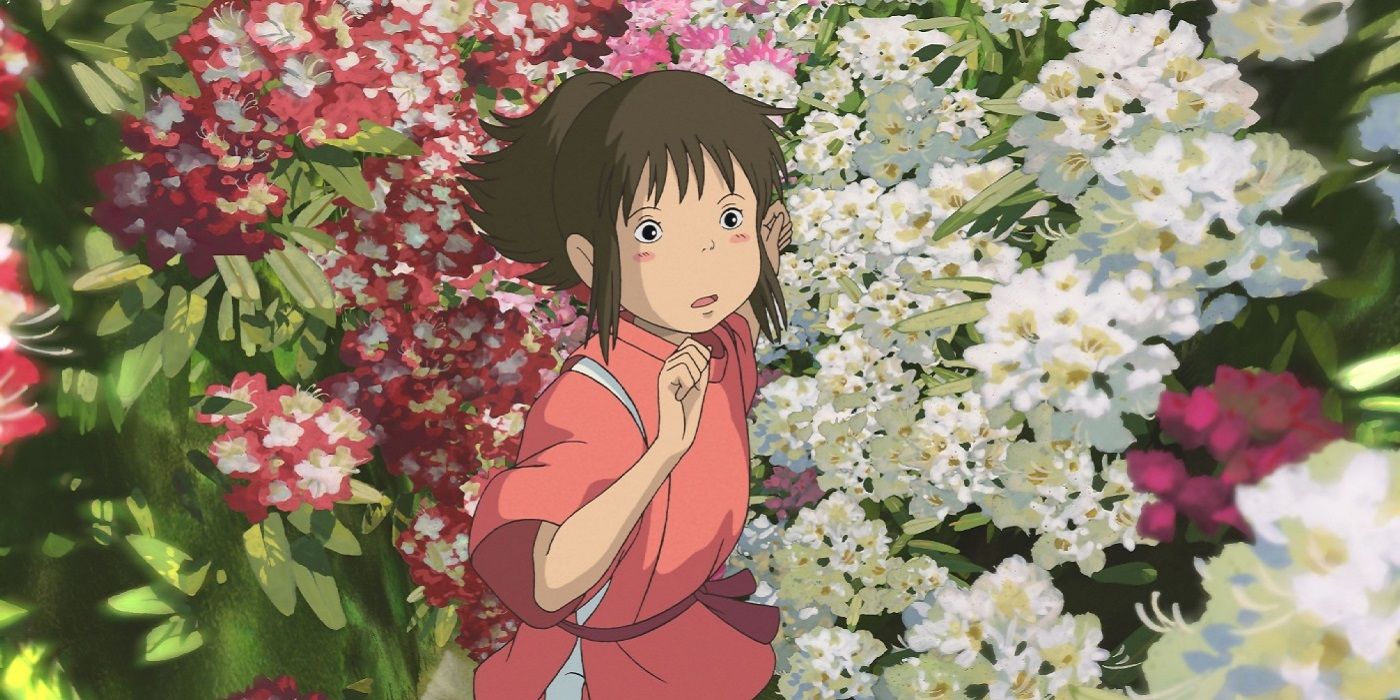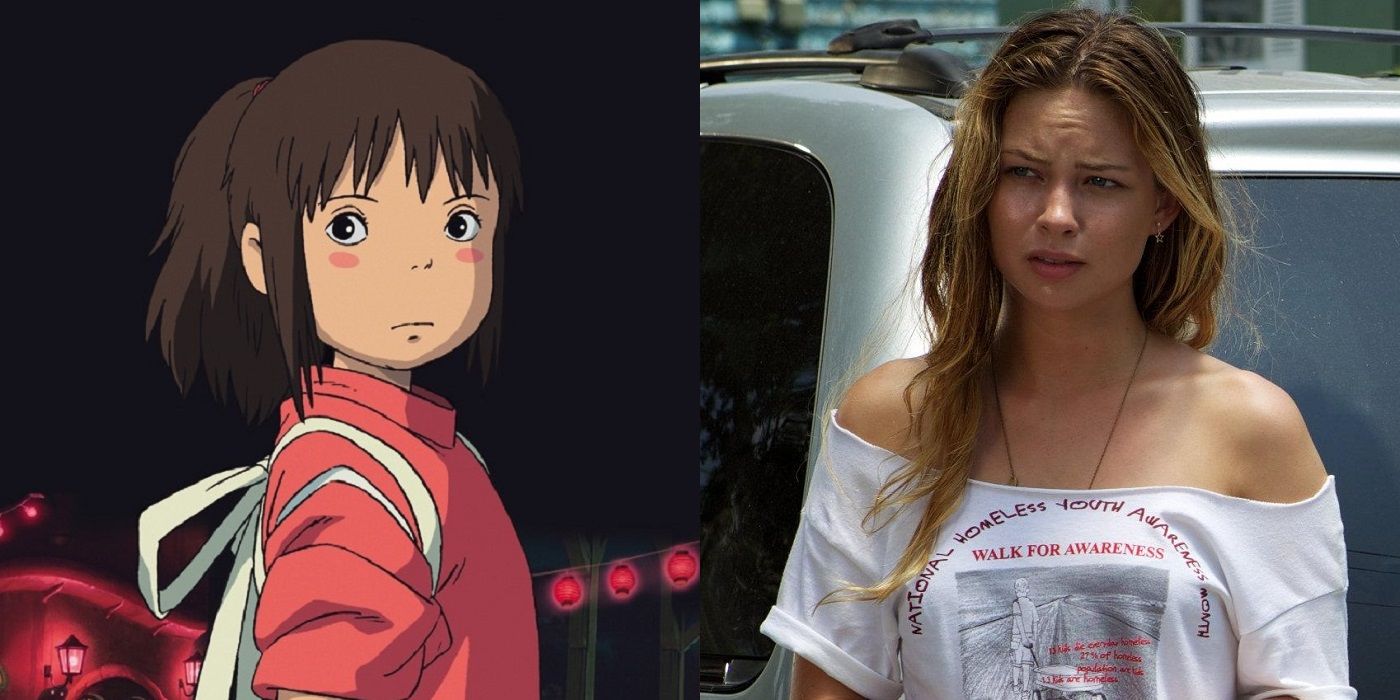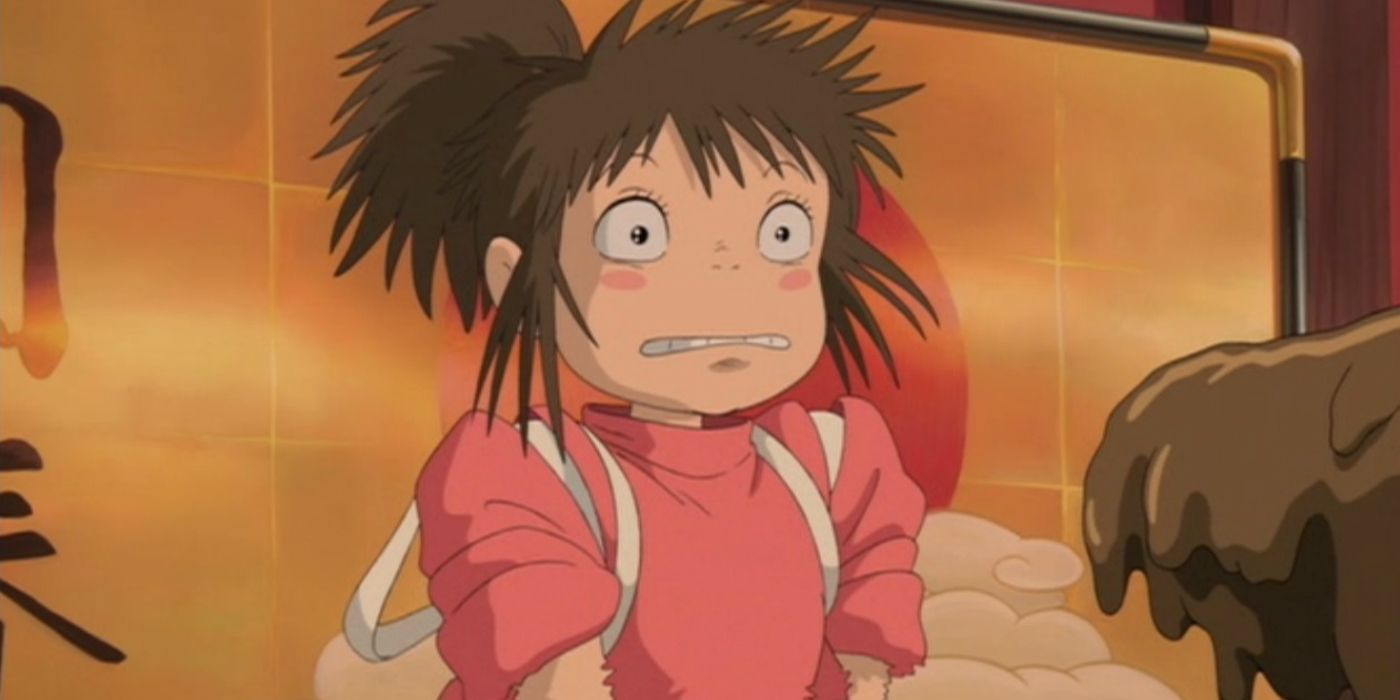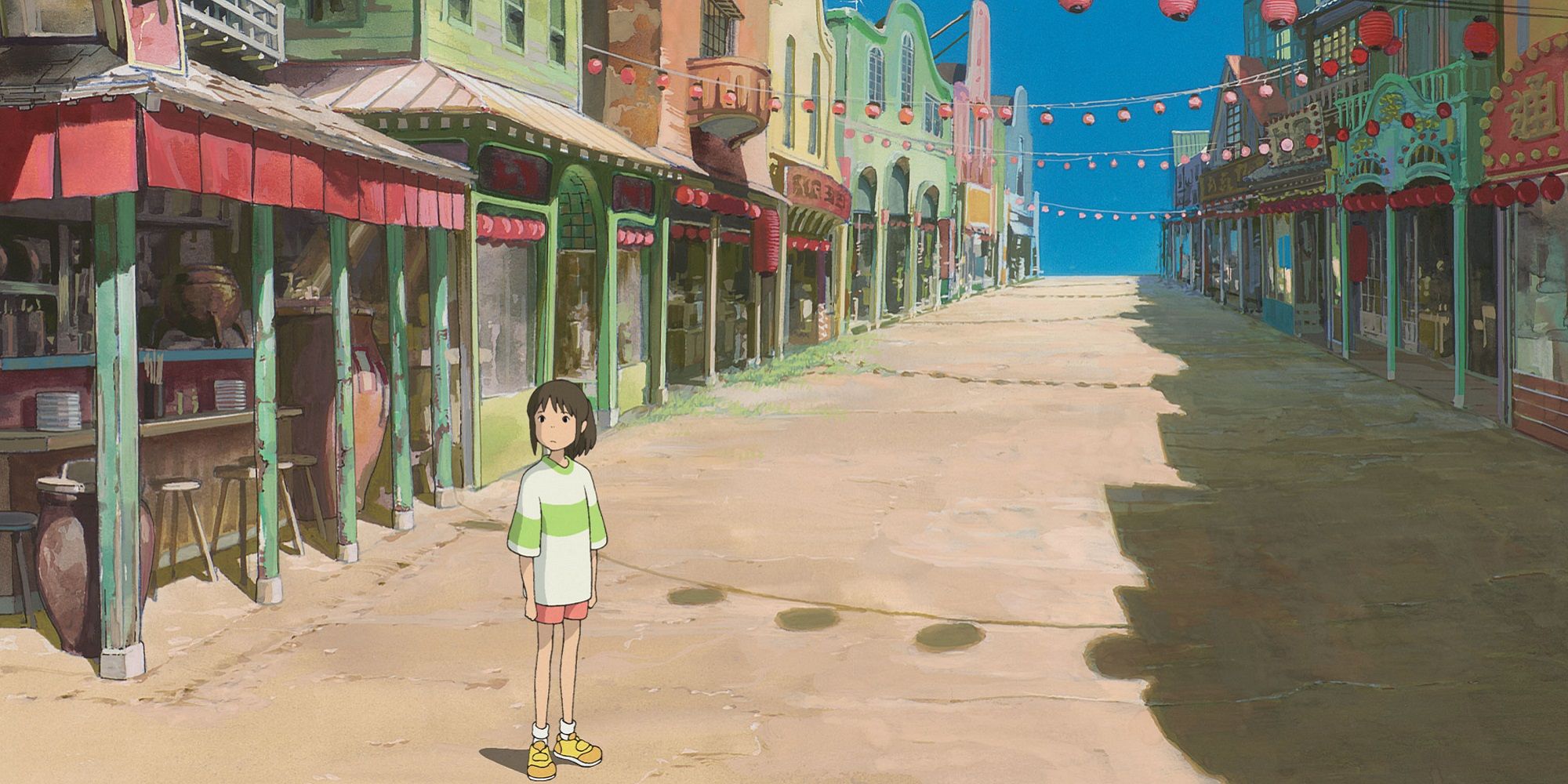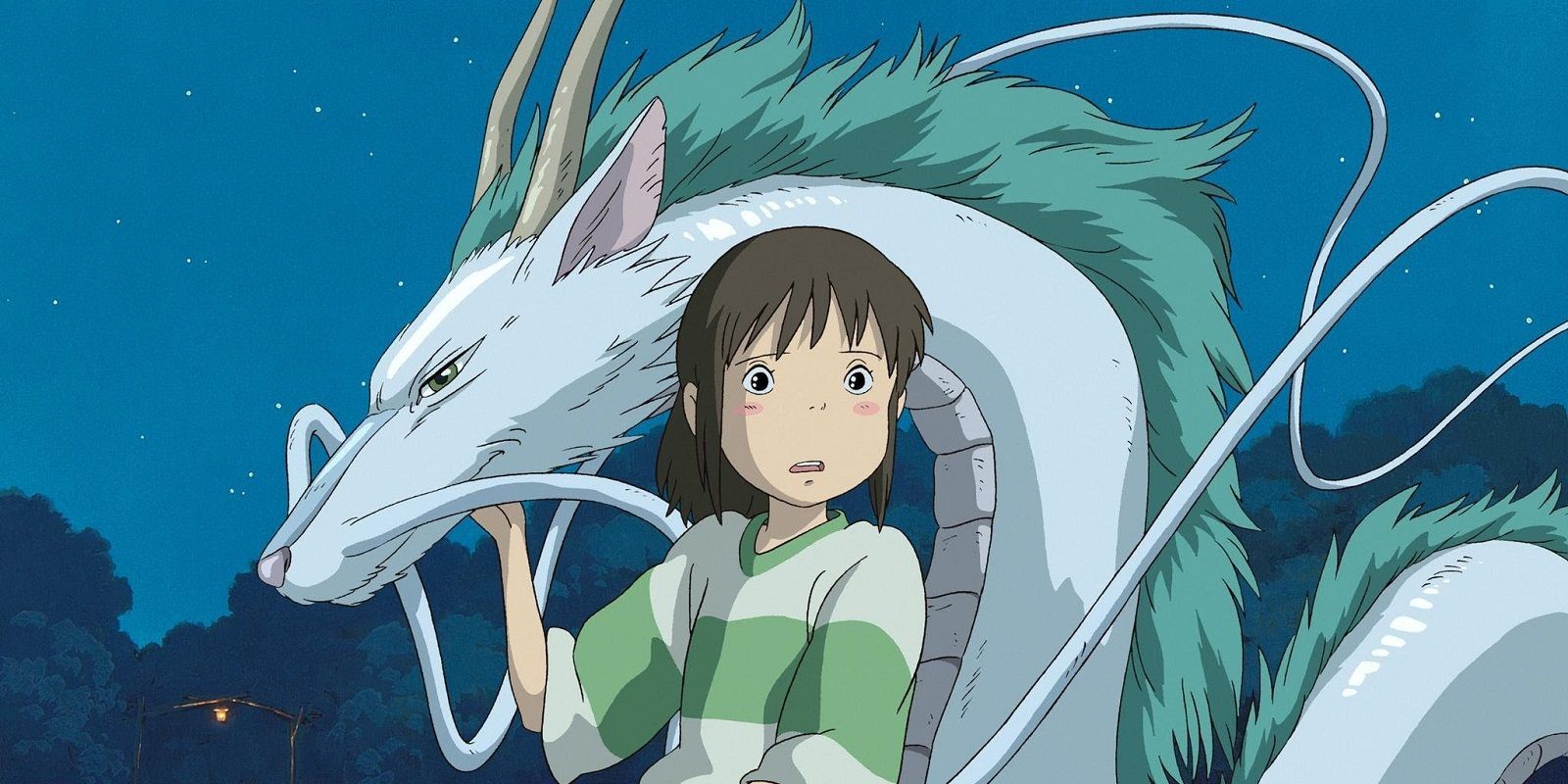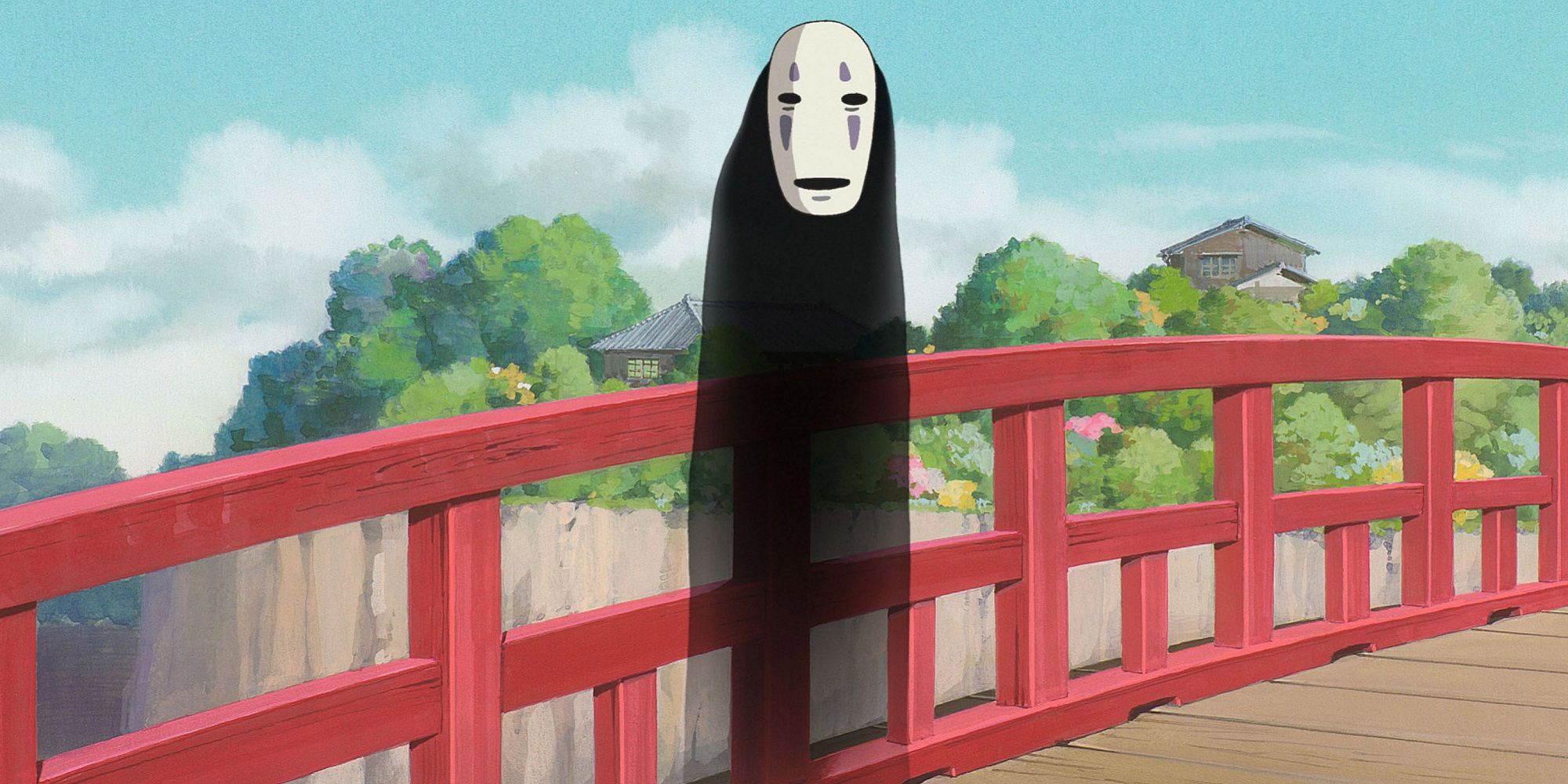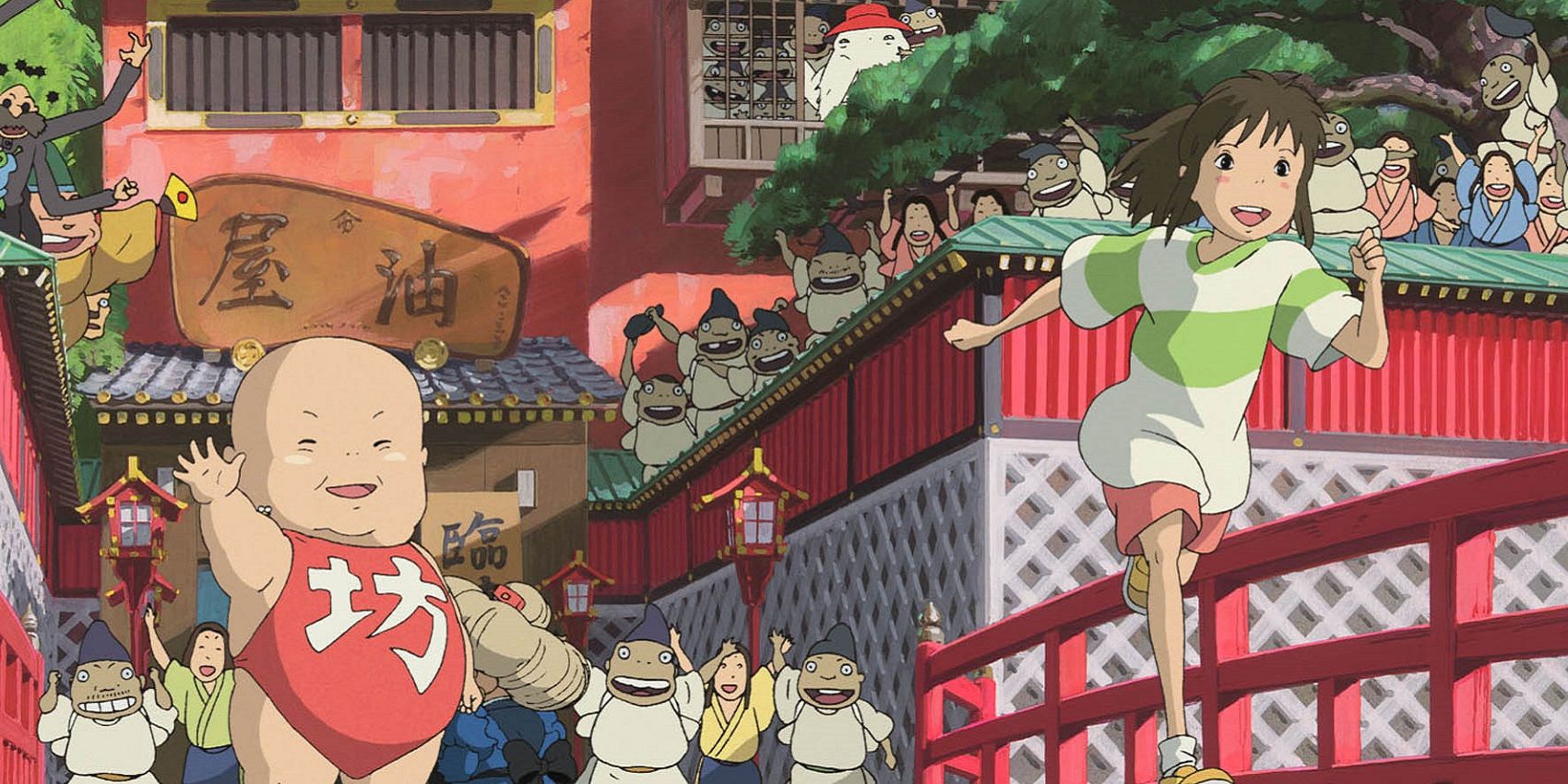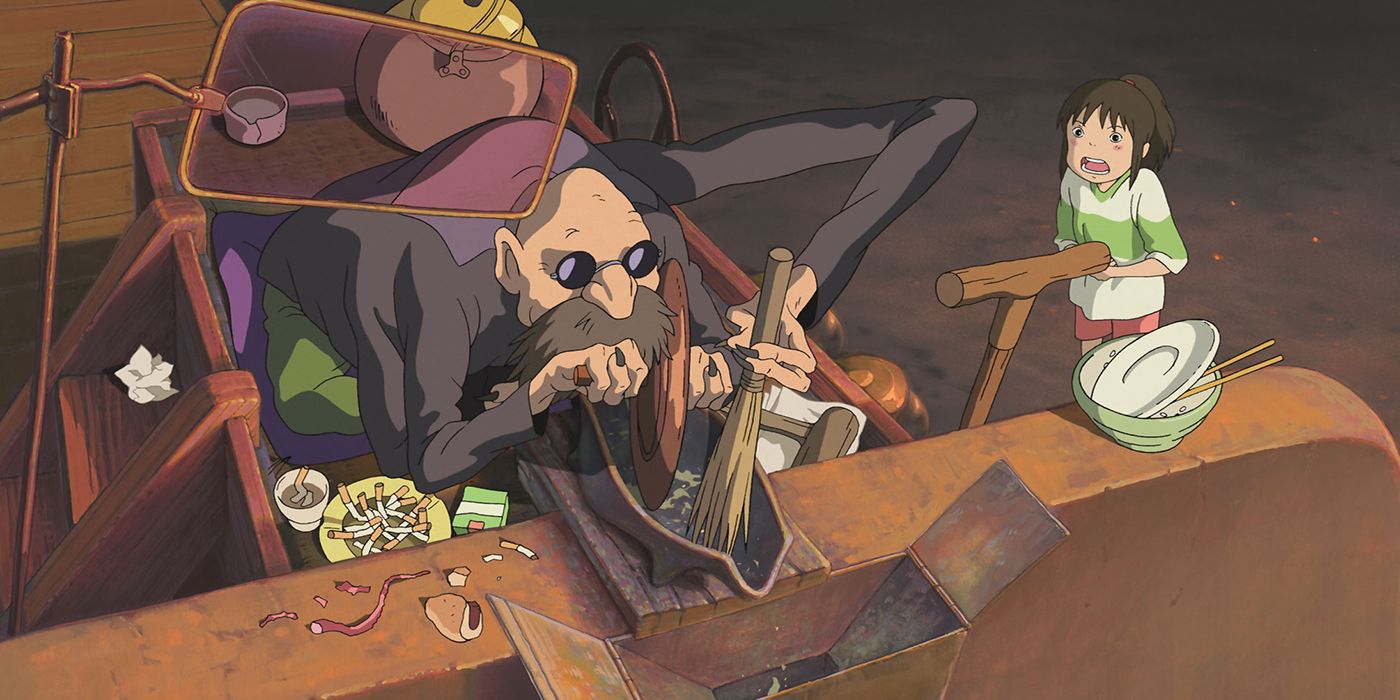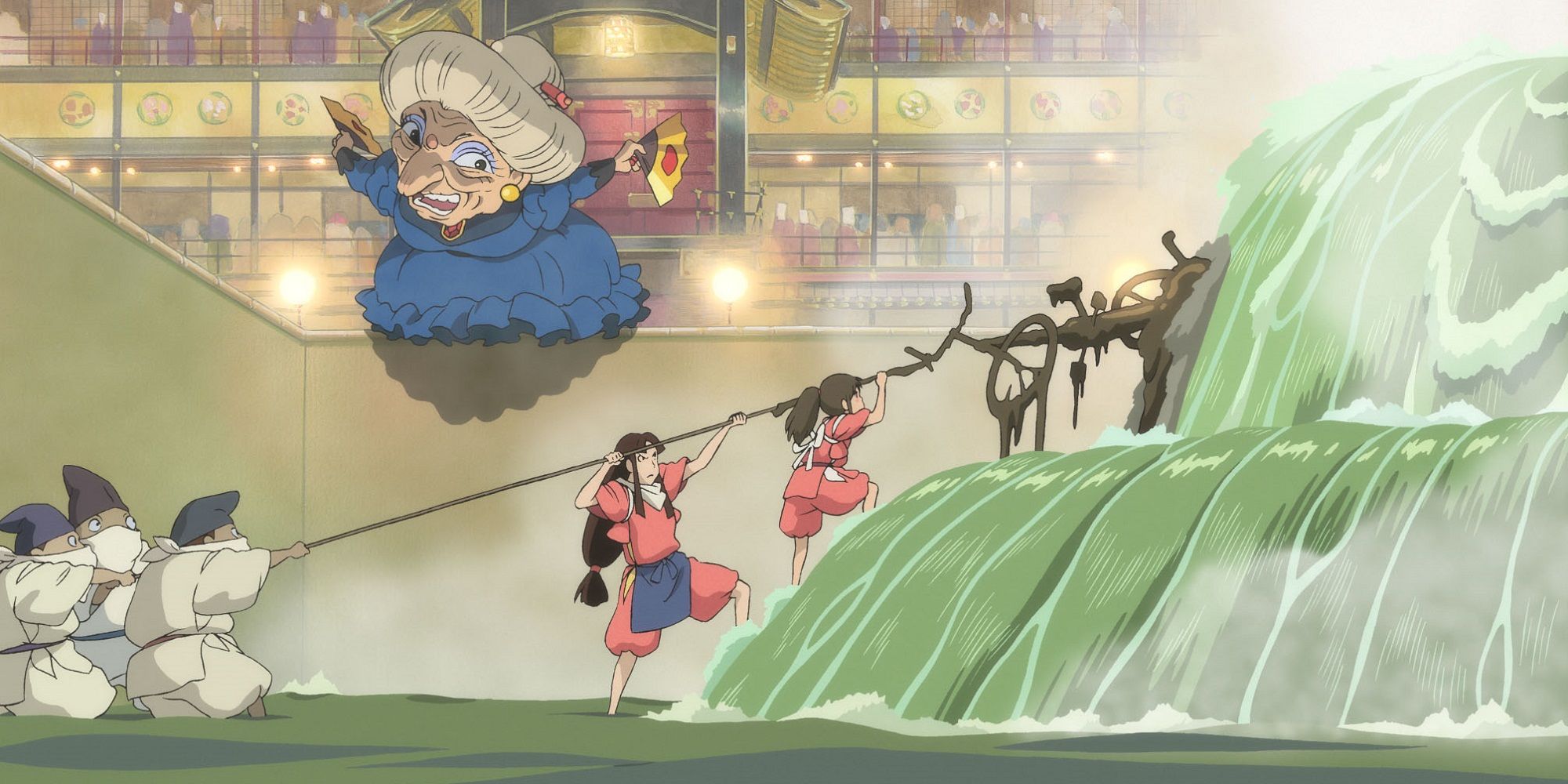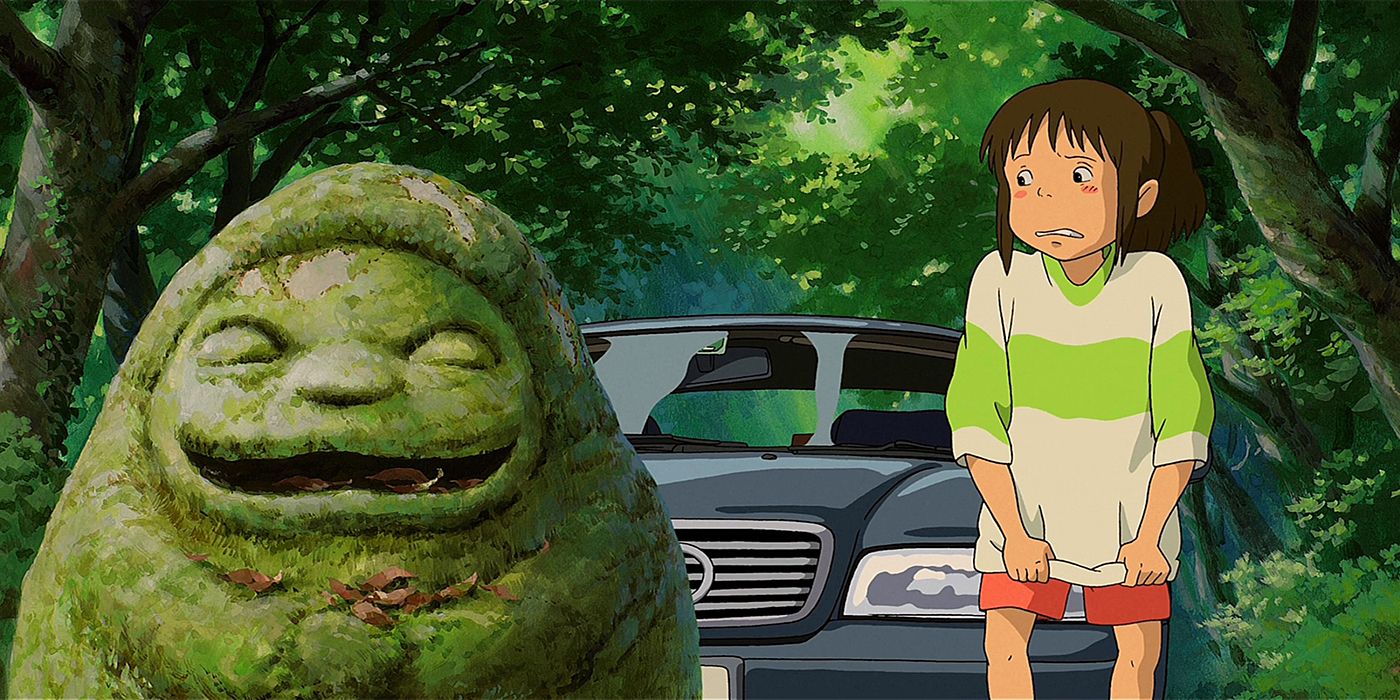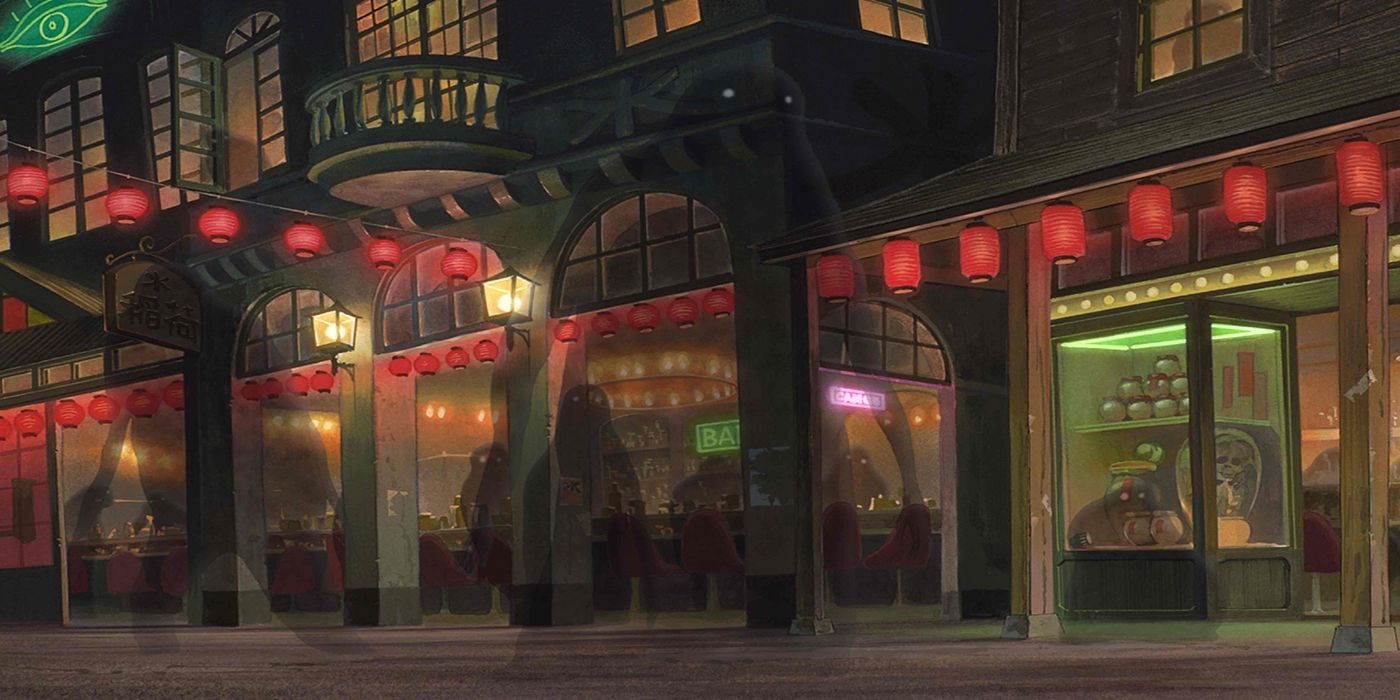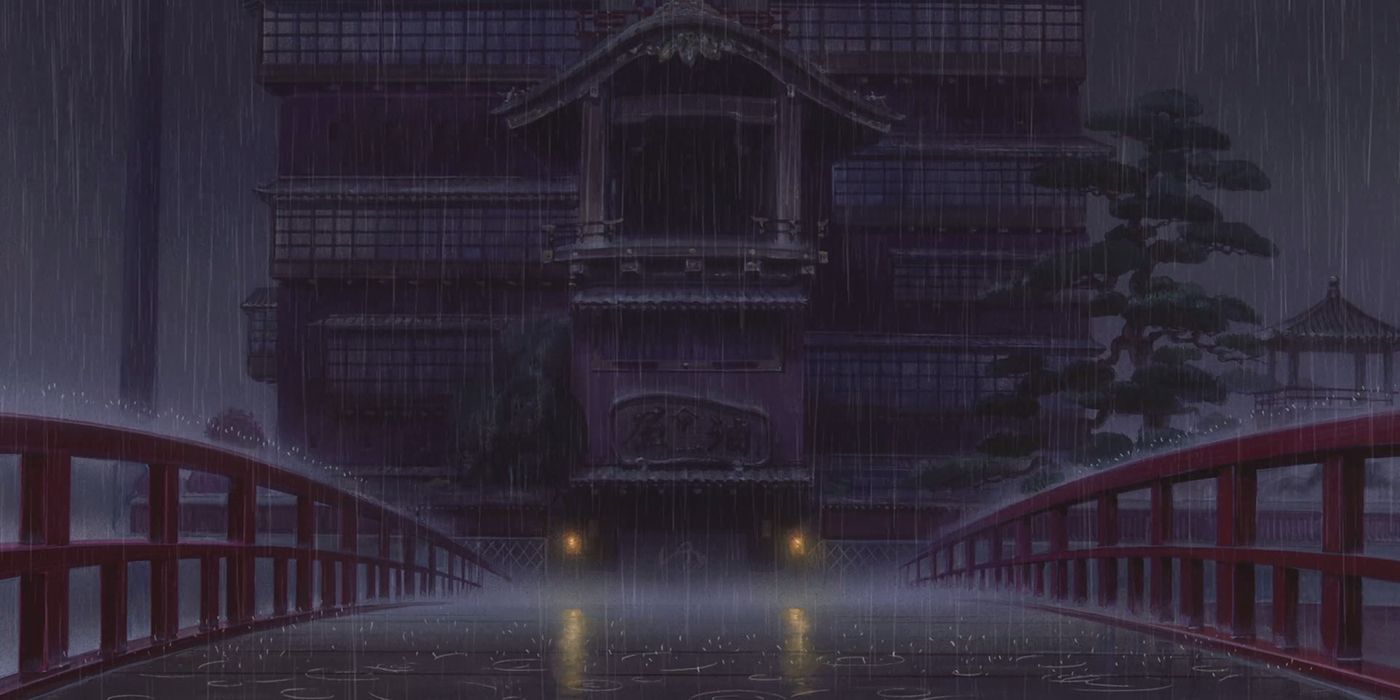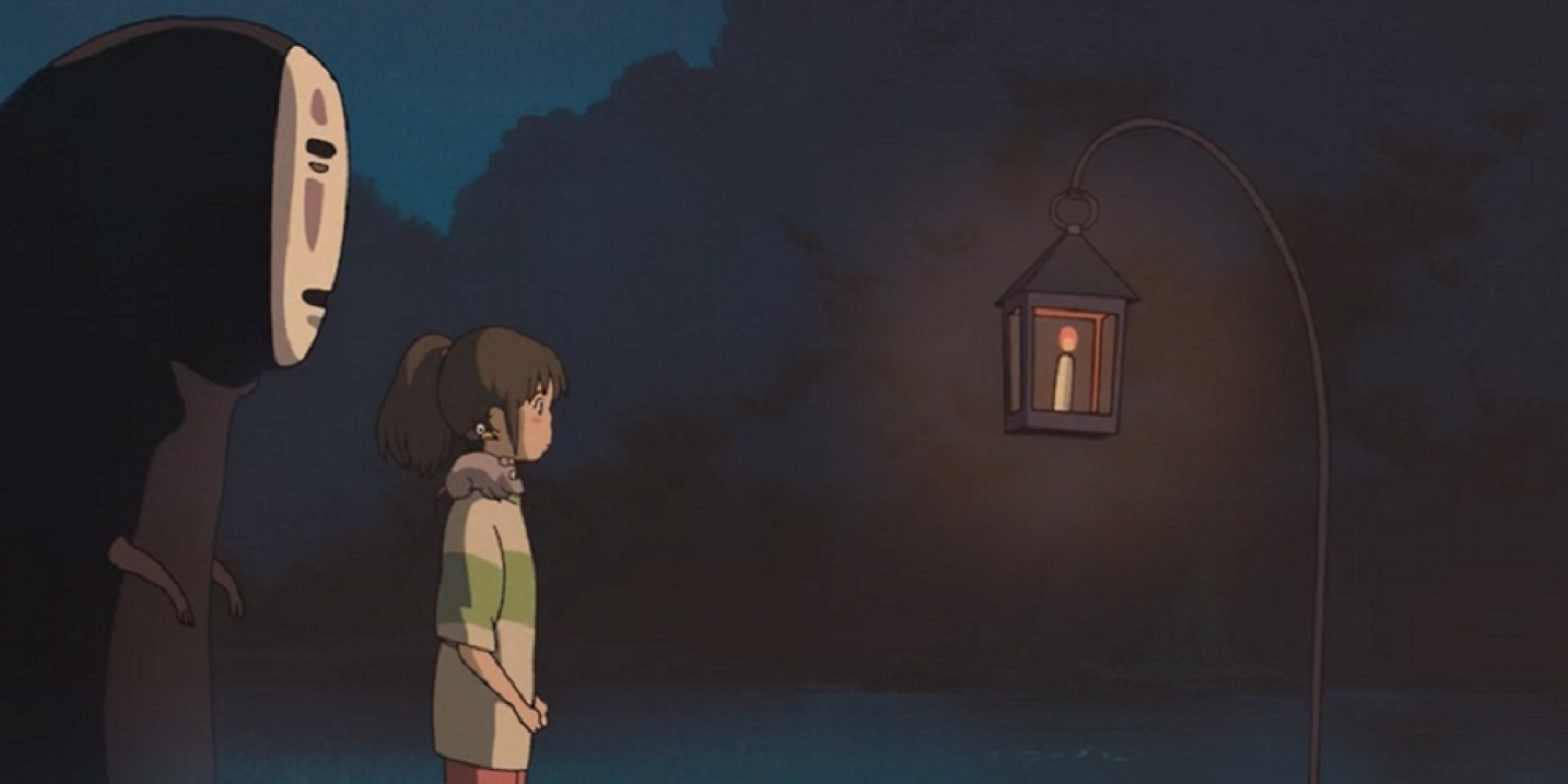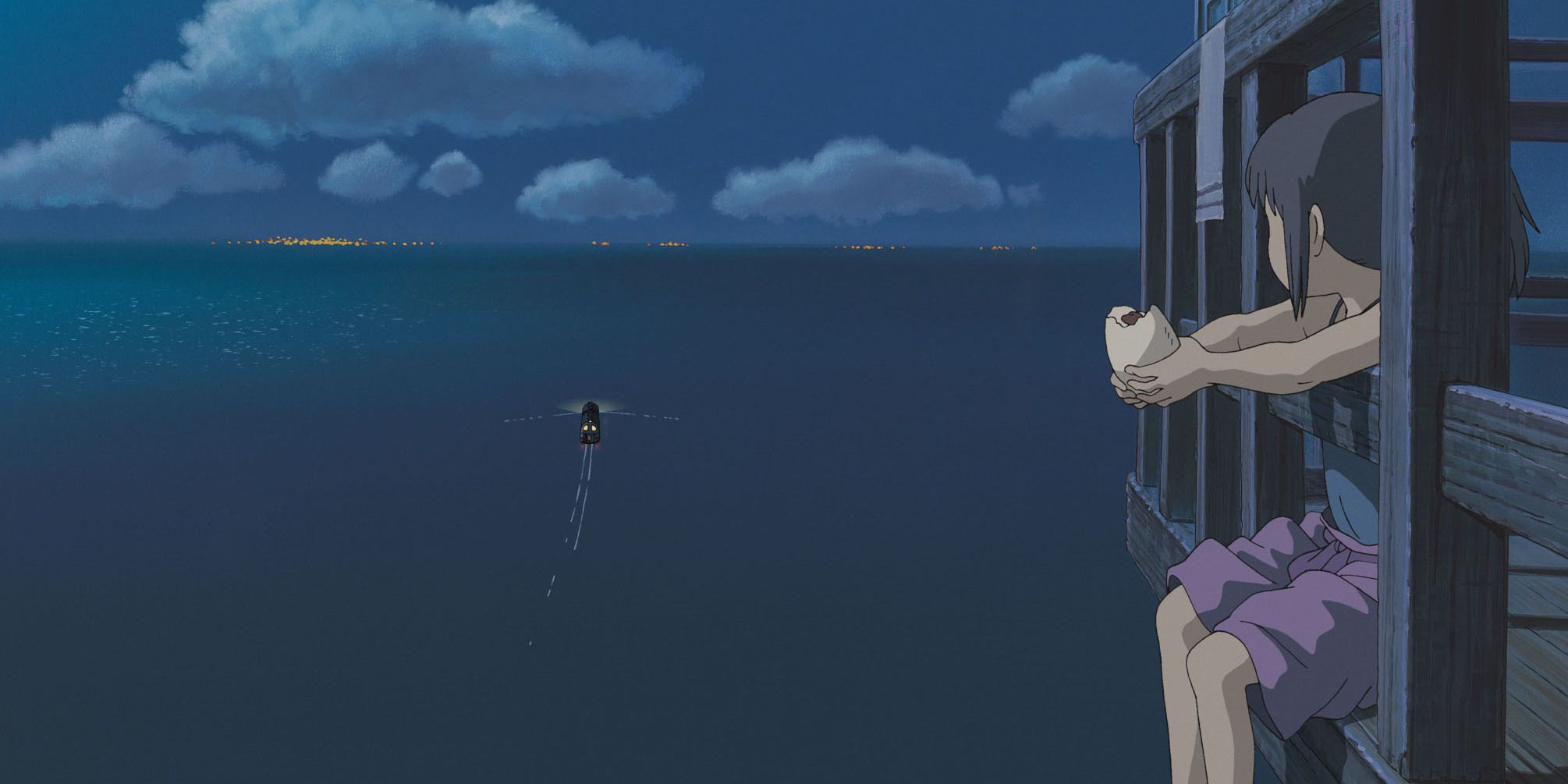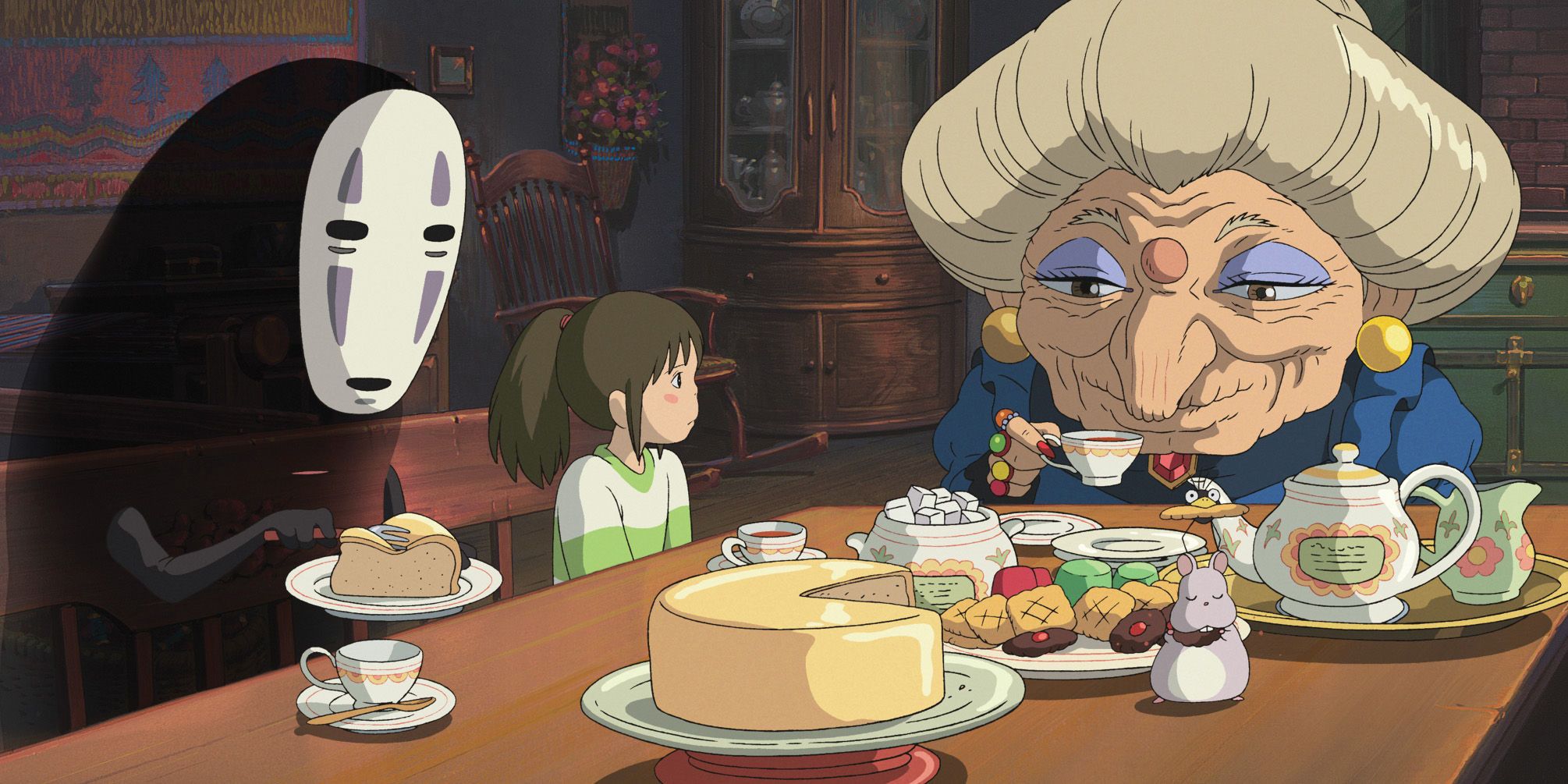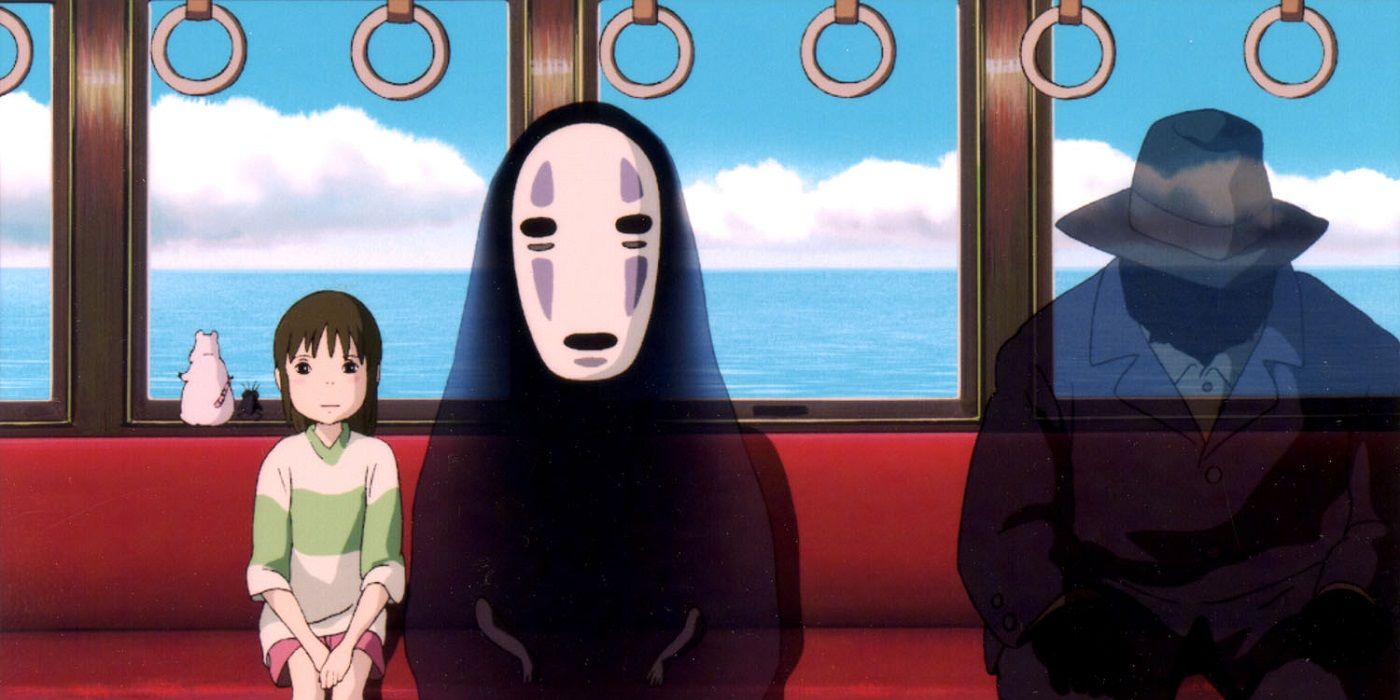A cinematic marvel, Spirited Away remains one of the most beloved animated films of all time. Using hand drawn animation techniques and seamless computer generated composites, the film creates a magical sense of joy for viewers of all ages. The story follows a family setting out to move to a new town, much to the dislike of sullen 10-year-old Chihiro. In an unsettling turn of events, her mother and father become transformed into pigs and Chihiro suddenly finds herself trapped in a spirit world. With a colorful array of characters, the film encompasses rich symbolism and powerful storytelling while following Chihiro’s transformative journey. Visually stunning and highly thematic, the movie is often heralded as a nostalgic tale about self-reliance.
Just last week, Kotaku reported that a newly released South Korean animated film called Lost in the Moonlight shares some eerie similarities to the Studio Ghibli classic. Whether you agree or remain on the fence, it’s hard to deny that there’s some close parallels between the two, much to the dismay of director Kim Hyun-Joo. We’re definitely Team Ghibli on this one, and we’d like to take a closer look at some of the lesser known tidbits about Spirited Away. If you’ve ever been curious about what it takes to create a Ghibli masterpiece, or wondered about some of the deeper themes artfully weaved throughout the film, read on to find out more how writer/director Hayao Miyazaki made the magic come to life for Spirited Away.
15. The American cast possesses lengthy voice acting resumes
Daveigh Chase, who led the American voice cast of Spirited Away as Chihiro, is well-known for her role of Samara Morgan in the 2002 horror flick, The Ring. She also reprised her role as Lilo from Lilo and Stitch for the TV series, which ran from 2003 until 2006. American voice actor Jason Marsden, who voiced Haku, and actress Suzanne Pleshette as Yubaba, also voice acted together as mother and son in The Lion King 2: Simba's Pride (1998).
Rumi Hiiragi, known as being the Japanese voice actress for Chihiro, stayed within the Ghibli family. She later lent her voice as Fujin in Ponyo in 2008 and Sachiko Hirokoji in From Up On Poppy Hill in 2011. In an interview with Animage, Hiiragi was asked about how she feels about her role in Spirited Away, saying “She is willful and spoiled, very much like girls today. I think that she is a bit like me.”
14. It didn’t have a script at first, which is common with Miyazaki’s work
With a story that’s so rich and compelling, it may come as a surprise that Spirited Away originally began production without a script. In fact, most all of writer/director Hayao Miyazaki’s creations share this organic and unstructured work process in the beginning. “I don't have the story finished and ready when we start work on a film. I usually don't have the time,” Miyazaki remarked in a Midnight Eye interview. “We never know where the story will go but we just keeping working on the film as it develops.”
One of the biggest difficulties he encountered was finding a way to simplify all of his ideas. While creating the film, Miyazaki had intended for the movie to be over three hours long with his original plot, but subsequently decided to trim down the storyline. Instead of getting an epic Lord of the Rings version of the tale, the film was shortened to it’s run time of 125 min. When it comes to his creative process, Hayao Miyazaki said it best, “It's not me who makes the film. The film makes itself and I have no choice but to follow.”
13. Miyazaki was inspired to create the character Chihiro by his friend's apathetic 10-year-old daughter
At the time, Miyazaki was retired and working on personal projects, but after an unexpected spark on inspiration, he began work on Spirited Away. The filmmaker takes a yearly sabbatical every summer, often visiting at a mountain cabin with friends and family. After observing his friend’s sullen, apathetic 10-year-old daughter, he was inspired to create a character like Chihiro.
Miyazaki tried reading shoujo manga, or young female-driven comics, in order to get a better understanding of his target demographic. He was quickly disheartened by manga from magazines like Nakayoshi or Ribon, feeling that the plots were shallow and too focused on love and romance for young female readers. "I felt this was not what they held dear in their hearts, not what they wanted. And so I wondered if I could make a movie in which they could be heroines..." he said in an interview with Nausicaa.net, "If they find this movie to be exciting, it will be a success in my mind. They can't lie. Until now, I made 'I wish there was such a person' leading characters. This time, however, I created a heroine who is an ordinary girl, someone with whom the audience can sympathize, someone about whom they can say, 'Yes, it's like that.' It's very important to make it plain and unexaggerated. Starting with that, it's not a story in which the characters grow up, but a story in which they draw on something already inside them, brought out by the particular circumstances... I wanted to tell such a story in this movie. I want my young friends to live like that, and I think they, too, have such a wish."
Readers of shoujo manga can certainly attest to some of the repetitive, predictable story lines of the genre, making a film like Spirited Away a true breath of fresh air.
12. The close up scenes of Chihiro and Haku (in dragon form) were modeled after a veterinarian opening a dog's jaw
To get a better idea of the attention to detail that was poured into this film, the animation team had to study animals and models to create a sense of realism. In one memorable scene, Chihiro gently feeds Haku in his dragon form, and there’s a close up shot of the dragon’s jaw widening. In other animated movies, this scene might be trivial, but with a mere moment’s glance, you can almost feel how palpable and real this creature appears to be. To capture this scene, animators visited a veterinarian’s office and studied the opening of an actual dog’s jaw.
Even the voice actors worked hard to stay in character throughout the film. Actress Yasuko Sawaguchi, who voiced Chihiro’s mother, chowed down on a piece of Kentucky Fried Chicken while the parents gorged in an early scene of the film. American voice actress Lauren Holly also snacked to get into the role, eating an apple.
There’s also small easter eggs sprinkled throughout the film, like subtle references to Kiki’s Delivery Service. When Sen enters Bo’s toy room, there’s a small blue pillow with a print of the black cat Jiji.
11. No-Face was inspired by a silkworm
Also known as Kaonashi, or "faceless", the enigmatic spirit No-Face goes through significant change throughout the film. The character's design resembles a silkworm, who also has a voracious appetite and an accordion-style belly which grows like a worm. With his propensity to eat, most people believe that No-Face's character derives from a silkworm. Towards the end of the film, No-Face is shown working with Zeniba as an apprentice, working with thread and actually spinning silk.
In Spirited Away: Film Of The Fantastic And Evolving Japanese Folk Symbols, author Noriko T. Reider describes how No-Face shares similarities to the Tatarigami (curse spirit) appearing in Princess Mononoke, and it also resembles faceless creatures found in the manga series, Inuyasha. Reider presents an in-depth analysis about the film, elaborating on the symbolism and folk inspiration for characters such as No-Face. "It is often said that in Japan high technology and traditional customs live side by side. They exist in fact not only side-by-side, but are inseparable, symbiotic. Spirited Away provides a good example of how, within the modern and the technological, folk beliefs and customs still thrive." Meanwhile, a fan theory on Reddit suggests that No-Face could possibly be another human that’s trapped in the spirit world.
10. It won an Oscar for Best Animated Feature, but Miyazaki didn't attend the awards ceremony
Spirited Away won an Oscar for Best Animated Feature Film in 2003, winning out over films like Ice Age, Lilo & Stitch, Spirit: Stallion of the Cimarron and Treasure Planet. Although this might be common knowledge for most, Miyazaki didn’t actually attend the awards ceremony for undisclosed reasons. In 2009, he finally opened up during an interview at Comic Con. “The reason I wasn’t here for the Academy Award was because I didn’t want to visit a country that was bombing Iraq,” he said to The Times. “At the time, my producer shut me up and did not allow me to say that, but I don’t see him around today. By the way, my producer also shared in that feeling.”
Miyazaki’s films have often expressed pacifist themes, including Princess Mononoke, Laputa: Castle in the Sky and Howl’s Moving Castle. With the 2016 awards ceremony spurring the question of Why Are The #OscarsSoWhite This Year? and public boycotting from directors like Spike Lee, it seems like Miyazaki is certainly not alone in that department.
9. Each name has a special meaning and significance, and they weren't chosen randomly
In the fantastical realm of Spirited Away, the meaning behind names take on special significance, often alluding to the character's power. For instance, the protagonist’s name, Chihiro Ogino (荻野 千尋) can be loosely translated as a thousand searches. In the film, Chihiro signs a binding contract with Yubaba, who removes several characters and shortens her name to Sen (千) which just means a thousand.
Yubaba (湯婆婆) translates as "bathhouse witch", which is an apt fit for her role as the Bathhouse boss, who controls characters by taking their names. Meanwhile, her sister’s name, Zeniba (銭婆) translates as "money witch”. Boh (坊) means "baby" or little boy -- and you can also spot the character written on his costume -- and Kamajii (釜爺) means "boiler geezer". In Spirited Away: Film Of The Fantastic And Evolving Japanese Folk Symbols, Reider found influences from Ursula Le Guin's book, The Earthsea Quartet. "Throughout the quartet, names are critical as 'who knows a man's name, holds that man's life in his keeping'".
8. The cleansing of the stink spirit was inspired by real events
The cleansing of the stink spirit remains a powerful and memorable scene that lingers in one’s mind long after watching the film. Part of what made that scene so compelling is that Miyazaki shared a similar experience from real life events, which he described to Midnight Eye: “There is a river close to where I live in the countryside. When they cleaned the river we got to see what was at the bottom of it, which was truly putrid. In the river there was a bicycle, with its wheel sticking out above the surface of the water. So they thought it would be easy to pull out, but it was terribly difficult because it had become so heavy from all the dirt it had collected over the years.”
“Now they've managed to clean up the river, the fish are slowly returning to it, so all is not lost. But the smell of what they dug up was really awful. Everyone had just been throwing stuff into that river over the years, so it was an absolute mess.”
7. The film contains religious references to Shinto, an ancient Japanese belief system in the film
Shinto refers to an ancient Japanese religion involving the worship of ancestors and kami, or nature spirits. In My Neighbor Totoro and Spirited Away, many viewers can clearly see the reverence for nature and kami throughout the films. At the beginning of Spirited Away, Chihiro sees a small stone statue by the roadside. This was explored to great detail in the article, "The Animated Worlds of Hayao Miyazaki, Filmic Representations of Shinto" from Metro Magazine. "Surrounded by tiny stone houses ‘where spirits live’, the squat statue seems to leer and grimace at her, however it is closely modelled on Douso-jin—a roadside Shinto deity and protector of travellers. Statues of this deity were often put at the boundary of a village or at crossroads to indicate the right direction. This metaphor-heavy place symbolically marks the family’s movement from the known to the unknown”.
For those interested in learning more, the article is a fantastic read, as it shares a great deal of insight on the deeper symbolism from the film. Both Wright and Clode (the writers behind the Metro piece we've linked to above) believe that the film shows how the kami live amongst humans, and have not been altered or destroyed by modernization.
6. The architecture was inspired by actual locations in real life
In an interview with Nausicaa.net, Miyazaki cites the Edo-Tokyo Open-air Architectural Museum as an inspiration: "I feel nostalgic here, especially when I stand here alone in the evening, near closing time, and the sun is setting—tears well up in my eyes." The Edo Tokyo Museum is a historical area with buildings and shops dating back to the Meiji and Taisho era in Japan. The museum strives to preserve accurate representations of historical buildings for future generations.
Other sources see a close parallel between the town of Jiufen in Taiwan to the abandoned theme park from the beginning of the film. From temples adorned with statues of dragons to an array of delectable goodies from crowded food stalls, we can definitely see the comparison. The bathhouse plays a pivotal role in the movie, and Miyazaki based the overall design off of an actual public bathhouse which he visited during his youth. He spoke to Midnight Eye and explained how he always remembers places which inspired him in the past, and many of these locations appear in other films oh his, like Laputa: Castle in the Sky and My Neighbor Totoro.
5. The closing song "Always With Me" was originally supposed to be used for a different film
Fans of Spirited Away might not be able to imagine a version of the movie without its titular ending song, "Always With Me". However, the song was originally supposed to be used for a different film, Rin the Chimney Painter, which Hayao Miyazaki had wanted to work on in the past. Inspired by a children’s book called Kirino Mukouno Fushigina Machi (A Mysterious Town Over the Mist) by Sachiko Kasiwaba, Miyazaki intended on creating a film version of the novel. It was originally published in 1980, and he had toyed with the idea of making a movie adaptation before even working on Princess Mononoke.
Hayao wrote a short proposal to get things started, but it ended up getting rejected and the film was never released. “After that, I thought it would be better to have a more lively character, so I wrote a proposal called 'Rin and the Chimney Painter.' It was a contemporary story with a heroine who was a little bit older, but it was rejected as well. It ended up being a story with a scary old woman sitting on the bandai of a bath house. Looking back, all three stories had bath houses in them,” Miyazaki further explained in an interview.
Miyazaki played the song, “Always With Me” often while working on Spirited Away, and later added it to accompany the closing credits. The song was created by Yumi Kimura, a Japanese musician who wrote the song, provided the vocals and even played the lyre in the background of the song. Stirring and memorable, the song captures the whimsical theme of nostalgia found in Spirited Away.
4. Chief creative officer at Pixar cites Miyazaki as a huge influence for his work
"Whenever we get stuck at Pixar or Disney, I put on a Miyazaki film sequence or two, just to get us inspired again," Pixar Chief Creative Officer John Lasseter said during an emotional tribute to the work of Studio Ghibli. Lasseter, who's also the CCO for Walt Disney Animation Studios and DisneyToon Studios, has a longstanding history with Japanese animation. When he began his career as an animator in the early '80s, he found that he was incredibly inspired by Hayao Miyazki's film The Castle of Cagliostro. He was initially drawn to the widespread appeal of his work, which didn't specifically seem like simply a kid's movie.
Lasseter later traveled to Japan and visited with Miyazaki, which later inspired him to create Toy Story. In the Making of Spirited Away, Lasseter explains how he wanted to bring an authentic representation of Miyazaki’s work to the U.S. He wanted to ensure that the dubbed work would convey the same messages as the original film, that nothing got lost in translation. John Lasseter worked closely with Hayao Miyazaki to eventually release the film on March 28, 2003.
Both animators share a mutual respect for one another, and there's even a small easter egg dedicated to Pixar within Spirited Away. When Chihiro, No-Face and Boh in mouse form exit the train at Swamp Bottom, they are greeted by an excitable lantern. The lantern hops ahead, guiding them toward Zeniba's house, and it's actually a reference to Pixar’s signature desk lamp character, Luxo Jr.
3. The animation process was originally way behind schedule
In January 2001, the animators over at Studio Ghibli were certainly feeling the mounting pressure, with the film nowhere near completion. Although they had been working on the film for a year, only half of the major scenes were completed, meaning it was definitely crunch time for the team. The movie was set to be released in 6 months time, and judging by the current work flow at the time, the film would have had to be pushed back.
In order for them to meet the summer deadline, the team hired an additional 20 animators for the task. The animation team worked relentlessly, with some employees working straight through the night more often than not. Behind the Scenes of Spirited Away gives in-depth look at the process, but we’ll have to warn you, it might suddenly make you crave ramen! Although they encountered some hiccups, Studio Ghibli was able to meet the deadlines and the film was released on July 20, 2001 in Japan. To celebrate the team’s efforts, Hayao Miyazaki himself cooked up a delicious dinner for everyone.
2. Some minor computer animation effects were used, but everything else was hand drawn
It goes without saying that the unique artwork and meticulous attention to detail in Spirited Away is without equal. In a time when most animated films are churned out with a glittering array of the latest and greatest 3D effects, the hand drawn animation found in Miyazaki’s work is truly a marvel. The backgrounds in Spirited Away were all created by hand, and the team even learned to use a newer 3D software called Softimage to create more texture. The result is a seamless blend of traditional animation techniques with modern technology.
Hayao Miyazaki draws inspiration from history and nature, but also credits Osamu Tezuka and other international films with influencing his work. “I was formed by the films and filmmakers of the 1950s, which was the time that I started watching a lot of films. One filmmaker who really influenced me was the French animator Paul Grimault. Another film which had a decisive influence on me was a Russian film, The Snow Queen. Contemporary animation directors I respect a lot are Yuri Norshteyn from Russia and Frederick Bach from Canada. Norshteyn in particular is someone who truly deserves the title of artist.” Miyazaki told Midnight Eye. As part of his work ethic, Hayao Miyazaki never likes to “waste art” and even if it won’t work in one film, he always tries to incorporate it into another project.
1. “Ma” is an important concept used in Spirited Away, and it refers to moments of stillness in the film
Some of the scenes which make Spirited Away differ from most animated films are actually the most simple, “unbusy” scenes in the entire film. The quiet moments, with Sen and No-Face sitting on the train and the soft transitions highlighting the painterly style architecture, help give the film a sense of place. Roger Ebert commented on this technique in an interview from 2002, enjoying the moments where people will be still, almost in a meditative way. “If you just have non-stop action with no breathing space at all, it's just busyness, But if you take a moment, then the tension building in the film can grow into a wider dimension.”
Later, Miyazaki explained his thought process, “In a way now, live action is becoming part of that whole soup called animation. Animation has become a word that encompasses so much, and my animation is just a little tiny dot over in the corner. It's plenty for me.” The idea of “ma” is just one element which makes Miyazaki’s vision simply unparalleled and unique. In February, it was announced that Miyazaki plans to keep working on short films for the Ghibli Museum, and we'll keep you updated on any further news.
---
Do you know of any more obscure facts surrounding Spirited Away? Let us know in the comments!

